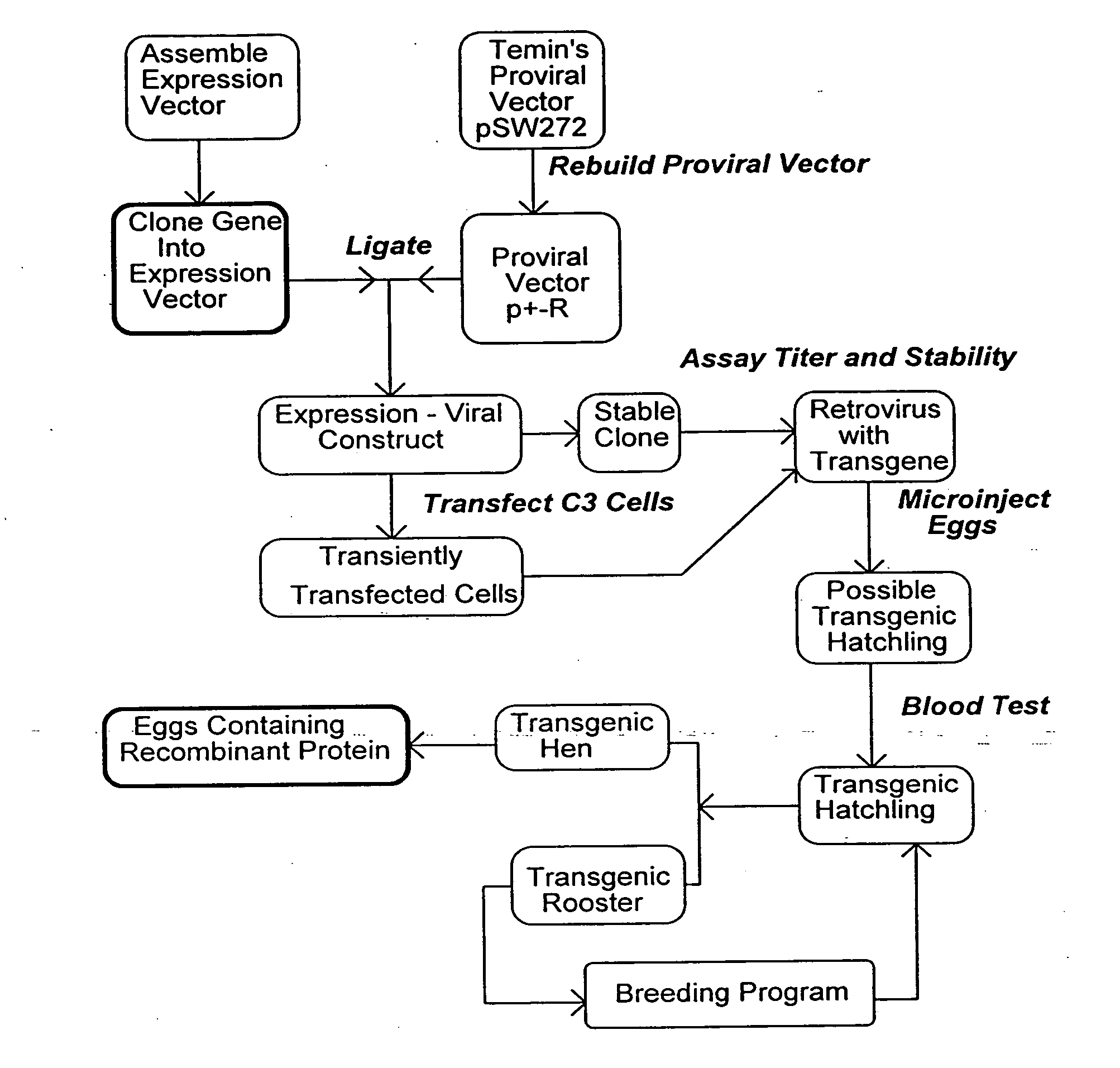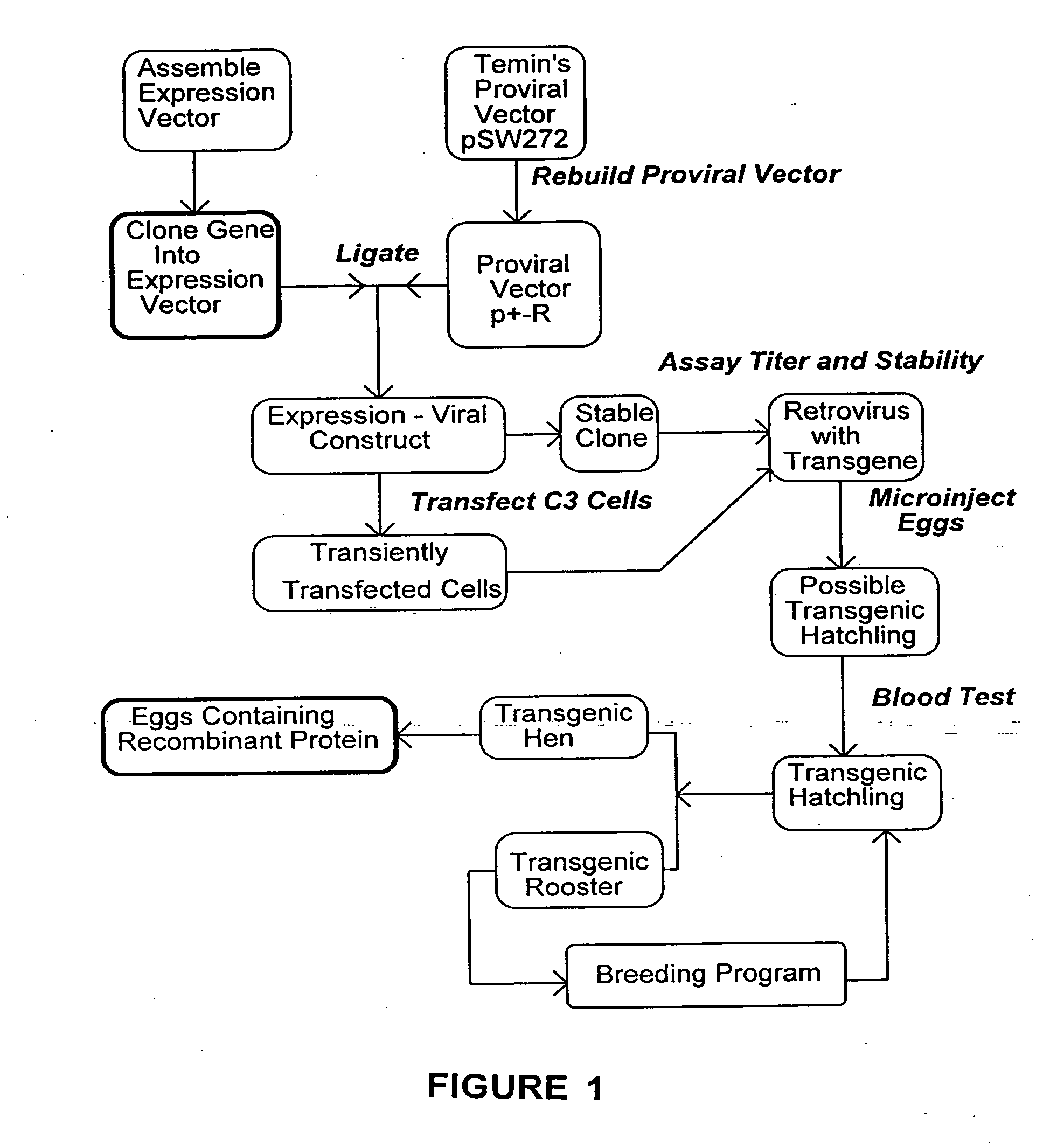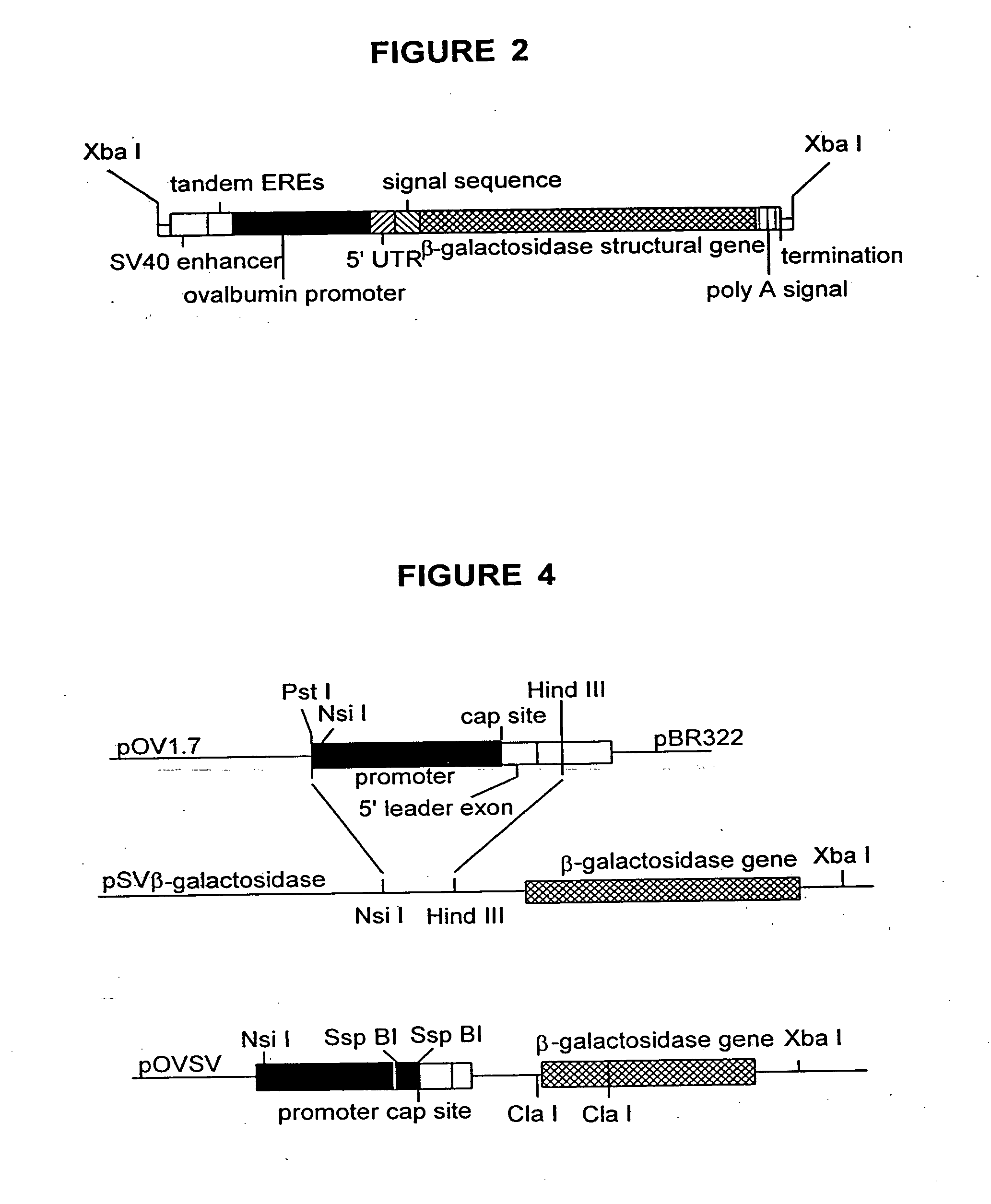Vectors and methods for tissue specific synthesis of protein in eggs of transgenic hens
- Summary
- Abstract
- Description
- Claims
- Application Information
AI Technical Summary
Benefits of technology
Problems solved by technology
Method used
Image
Examples
specific example 1
N
Discussion
[0040] Promoter. The protein ovalbumin is the most abundant protein in egg white. Ovalbumin is synthesized in the tubular gland cells of the oviduct magnum and secreted directly into the lumen, where it joins the forming egg. The ovalbumin promoter is a well characterized and complex promoter. Houdebine, L. M., J. Biotech 34:269-287 (1994). The ovalbumin promoter is regulated by all known classes of steroid hormones (Gaub, M. P., et al., Cell 63:1267-1276 (1990)), and at least eight different regulatory proteins or groups of “proteins are thought to bind to a region spanning 1.1 kb 5′ to the cap site. These proteins include the TATA binding protein complex (TFIID), the estrogen receptor, activator protein 1 (AP-1), which includes the fos and jun gene products and related peptides (Curran, T., et al., Cell 55:395-397 (1988)), the chicken ovalbumin upstream promoter transcription factor (COUP-TF) (Wang, L., et al., Nature 340:163-166 (1989)) and an associated protein S300-...
specific example 2
DESIGN AND CONSTRUCTION
Retroviral Vector Design
[0063] The plasmid pSW272 (Emerman and Temin, Cell 39:459467 (1984)) contains a deletion mutant of spleen necrosis virus (SNV), now the reticuloendotheliosis virus (REV). The provirus within the plasmid comprises the LTRs, the packaging sequence and the thymidine kinase gene and its promoter as a selectable marker for determination of viral titer. There is a unique Xba I site 5′ to the thymidine kinase promoter. In a previous study, the neomycin phosphotransferase gene had been inserted in this vicinity (in a Hind III site) resulting in a second construct pME111 (Emerman and Temin, Cell 39:459467 (1984)) which was used successfully to generate a transgenic chicken (Bosselman, et al., Science 243:533-535 (1989)). In the same study, the gene encoding chicken growth hormone was-cloned into pSW272, and-resulting transgenic chickens had significantly higher levels of circulating growth hormone than nontransgenic controls. pSW272 was modifie...
specific example 3
Method I
[0081] Each of the two orientation constructs for a given retroviral vector, was transfected into the C3 cell line, and stable clones selected. DNA is isolated from the clones and analyzed for integrated intact proviral DNA by Southern blot. Appropriate clones are propagated and assayed for retrovirus on CEF cells selected for hygromycin resistance. Clones producing high titers are used to generate retrovirus, which is further concentrated by filtration and or centrifugation.
[0082] When a clone is found producing high titers of intact viral DNA, eggs are injected as described in U.S. Pat. No. 5,162,215 and Bosselman, R. A. et al., Science 243:533-535 (1989), herein incorporated by reference. Newly laid line 0 SPF eggs are obtained from SPAFAS (Preston, Conn.), and maintained at 20° C. on one side for at least 5 hours. The top of the egg is prepped with 70% ethanol, and air dried. The shell is then opened with a dremmel mototool fitted with a steel burr. 15-25 microliters o...
PUM
| Property | Measurement | Unit |
|---|---|---|
| Time | aaaaa | aaaaa |
Abstract
Description
Claims
Application Information
 Login to View More
Login to View More - R&D
- Intellectual Property
- Life Sciences
- Materials
- Tech Scout
- Unparalleled Data Quality
- Higher Quality Content
- 60% Fewer Hallucinations
Browse by: Latest US Patents, China's latest patents, Technical Efficacy Thesaurus, Application Domain, Technology Topic, Popular Technical Reports.
© 2025 PatSnap. All rights reserved.Legal|Privacy policy|Modern Slavery Act Transparency Statement|Sitemap|About US| Contact US: help@patsnap.com



